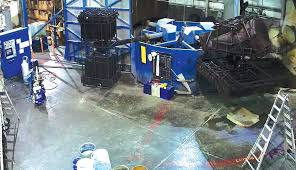Rotational molding, also known as rotomolding, is an efficient and flexible manufacturing method to create hollow plastic components. This method is popular due to its capability to produce complex shapes with consistent wall thicknesses, and with the least amount of material waste. Here’s a comprehensive guide for knowing more about Plastics Rotomolding and its benefits.
What is Rotomolding?
Plastics Rotomoldingis a thermal plastic processing technique used to produce seamless, hollow plastic parts. The process involves three main phases: heating, rotating and cooling. In the beginning, the resin is placed into the mold. This mold then gets heated in an oven, while moving along two perpendicular axes. This rotation ensures the mold is evenly coated with the internal surfaces of the mold. As the mold cools the plastic solidifies into the final shape.
Materials Used
The most popular material used in rotomolding is the polyethylene, which comes in several grades such as high-density polyethylene (HDPE) as well as low density polyethylene (LDPE). Other materials, like polypropylene and polyvinyl chloride (PVC) and nylon, could also be utilized based on the characteristics desired for your final item. Each material has its own advantages including flexibility, impact resistance or resistance to chemicals.
Advantages of Rotomolding
Flexible Design: Rotomolding allows for the design of complex shapes as well as intricate features. The process can produce parts with varying wall thicknesses, interior structures as well as integrated features like ribs or bosses.
Uniform wall thickness: In contrast to other plastic molding techniques that use rotomolding, it ensures a consistent wall thickness across the entire part. This helps to achieve better strength and durability.
Cost-Effectiveness: This process is affordable, particularly for large, hollow parts. The tooling costs are lower compared to injection molding because molds are usually made of aluminum, or other lesser expensive materials.
Minimal Waste: Rotomolding generates minimal material waste. The excess material can be recycled or reused, making it an environmentally green option.
The durability and strength: The parts produced by rotomolding are known for their toughness and resistance to impact and environmental factors. This makes them suitable for use in extreme conditions.
Applications
Rotomolding is utilized in a variety of industries and uses. Common products include storage tanks, automotive components, kayaks, playground equipment and custom containers. The wide range of applications is ideal for both industrial and consumer goods.
Conclusion
Rotomolding is a sturdy and scalable manufacturing method that offers numerous advantages for producing hollow plastic parts. Its ability to make complex shapes, maintain uniform wall thickness, and eliminate waste, rotomolding remains the preferred option for many applications. Knowing this process as well as its advantages will help designers and manufacturers make educated decisions when it comes to using this method to create plastic products.

